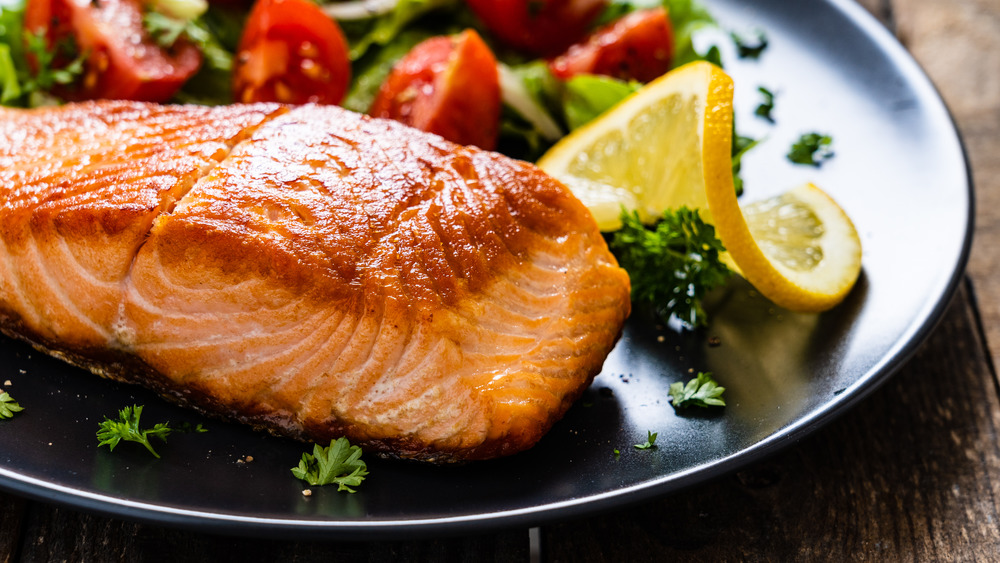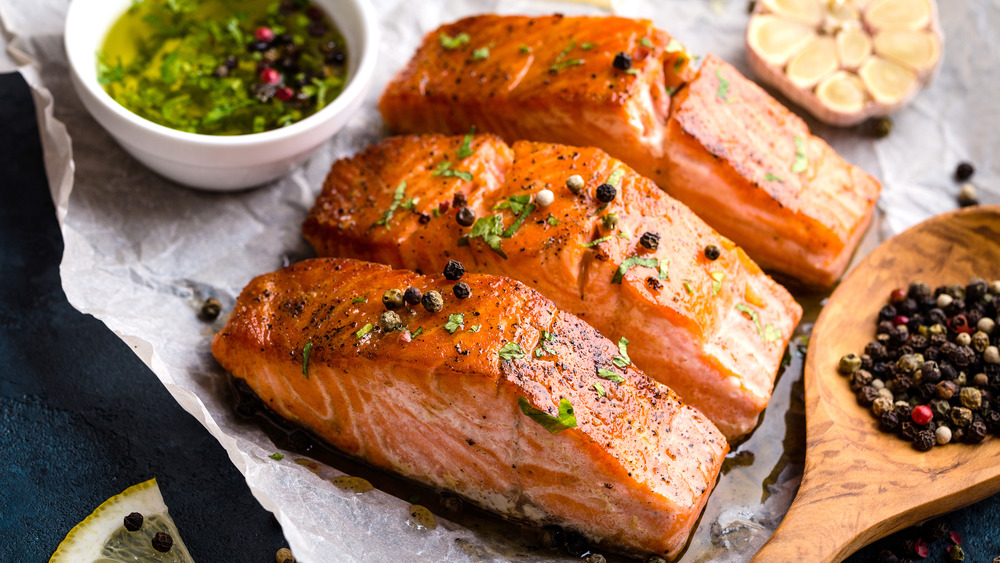Don't Make This Common Mistake When Reheating Salmon
For most people, their first instinct when reheating leftovers is to head straight for the microwave. But while some foods might heat up fine with a spin in the microwave, fish isn't one of them. Reheating salmon this way can end up seriously drying it out, per BlueGlacier. Luckily, there are other ways to reheat your salmon that won't destroy the fish's texture or make your kitchen smell like a fish market.
According to The Kitchn, if you put an already-cooked salmon fillet in the microwave to reheat it, you stand a good chance of drying out the fish completely. Salmon is already easy to overcook, so when you put it under the high heat of the microwave, it'll quickly go completely dry. All the tenderness of a freshly cooked fillet will be gone and your leftovers will probably go to waste. Also, reheating salmon in the microwave tends to release a strong fishy smell, so your nose won't be happy with this heating method either.
How to reheat salmon the right way
The microwave might not be your best option, but it's still possible to reheat salmon so it's tasty and tender (and doesn't smell). According to Cook's Illustrated, thicker fillets tend to reheat better than thinner ones, so if you have a choice, try to eat thin salmon fillets right after cooking them. You can't completely eliminate the smell when reheating salmon, because the reheating process oxidizes some of the fatty acids, creating the fishy smell, but avoiding the microwave will make it a little less pungent.
Instead of heading to the microwave, Cook's Illustrated recommends reheating salmon in the oven. Set a wire rack on top of a rimmed baking sheet, then put your leftover fillets on top. Cover with foil before putting them in the oven — this will help keep the fish from drying out. Then, reheat at 275 degrees for about 15 minutes, or until the fish registers 125 to 130 degrees with an instant-read thermometer. Fillets thicker than one inch might need a little more time in the oven, so keep an eye on them to make sure they don't overheat. Once the fish reaches the right temperature, it'll be almost as good as a freshly cooked fillet, and much better than dried-out microwaved salmon.

